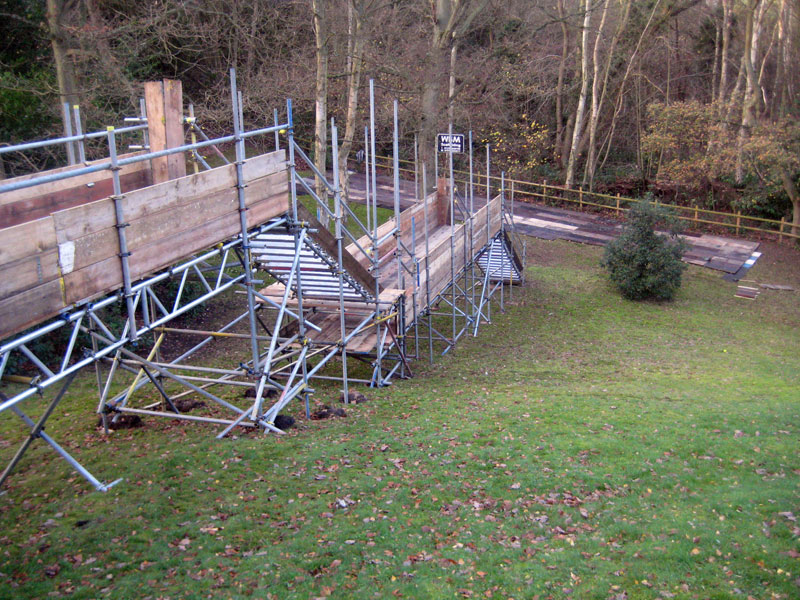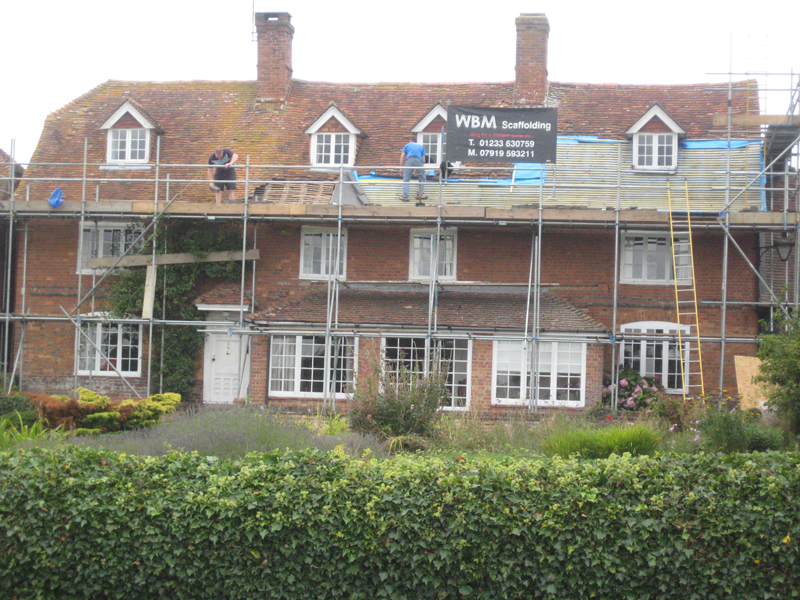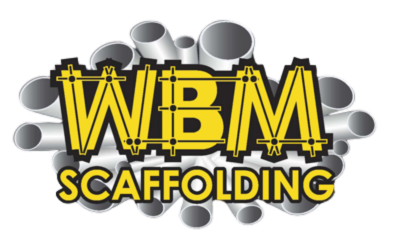Scaffolding is one of the most important parts of any building or renovation project that involves working at height. Whether you’re carrying out roof repairs, building extensions, or repainting a property, scaffolding provides safe access for workers and materials. But to get the most out of your scaffold setup — and avoid safety risks or delays — it’s vital to follow best practices.
In this blog, we share top scaffolding tips to help you plan smarter, stay compliant, and keep your project on track.








1. Plan the Scaffold Early in the Project
Scaffolding is often left until the last minute — but it shouldn’t be. It should be part of the planning process from the start.
- Assess the site early to identify access points, height requirements, and ground conditions.
- Include scaffold needs in your timeline and budget.
- Allow time for permissions if the scaffold extends onto a public pavement or road.
Early planning avoids delays and ensures that scaffolders can provide a solution that meets the needs of all trades involved.
2. Use Qualified Scaffolders
One of the most important scaffolding tips is to never cut corners with who erects the scaffold. Always use trained, experienced scaffolders.
Look for:
- CISRS certification (Construction Industry Scaffolders Record Scheme)
- Proven experience on similar domestic or commercial projects
- Full public liability insurance
- A good local reputation
Improperly installed scaffolding is dangerous and could lead to serious injury or prosecution. Always ask for credentials and check reviews before hiring.
Need help from experienced professionals? Contact us here to speak with our team.
3. Understand Your Legal Responsibilities
Whether you’re a homeowner or site manager, there are legal duties to consider when scaffolding is in use.
- Under the Work at Height Regulations 2005, you must ensure all work at height is properly planned and carried out safely.
- Scaffold must be inspected before use, then every 7 days.
- If erected in a public space, a scaffold licence from the local authority is required.
Good scaffolders will manage these elements for you, including licence applications and regular safety checks.
4. Don’t Forget About the Ground
Scaffolding relies on a stable base. Before installation, check that the ground is:
- Firm and level
- Not prone to flooding
- Clear of manholes, drains, or underground services
If the ground is sloped or soft, scaffolders may need to use base plates, sole boards, or additional bracing. Raising these points early helps prevent stability issues once work starts.
5. Communicate with All Trades
If you’re managing a larger job involving different trades — such as roofers, builders, and painters — make sure the scaffold design works for everyone.
Ask:
- Will multiple trades need access at the same time?
- Do any trades require loading bays or hoists?
- Are certain areas more time-sensitive than others?
Clear communication helps scaffolders plan a structure that suits the full scope of the project, avoiding the need for costly alterations later on.
6. Use Scaffold for Protection, Not Just Access
Scaffolding isn’t only for reaching high places — it’s also a tool for protecting workers and the building itself.
You can request:
- Edge protection and guardrails to prevent falls
- Debris netting to catch falling materials
- Temporary roofs to shield exposed interiors
- Brick guards and toe boards for extra safety
These additions might cost more initially but often save time and prevent injury or damage.
7. Regularly Inspect and Maintain the Scaffold
Even when scaffold is correctly installed, it still needs regular checks. UK regulations require scaffolding to be inspected:
- Before its first use
- Every 7 days after that
- After any changes or severe weather
Look for:
- Loose fittings or damaged boards
- Unstable components
- Missing guardrails
- Slipping hazards
If you’re unsure whether the scaffold is safe, don’t use it. Contact your scaffold provider immediately.
8. Make Sure the Scaffold Suits the Work
There’s no one-size-fits-all scaffold. Different jobs require different setups. A few common types include:
- Independent scaffolds – used along building walls
- Birdcage scaffolds – ideal for internal ceiling work
- Cantilever scaffolds – good for limited ground access
- Mobile towers – best for shorter, low-level tasks
A good scaffolding tip is to explain exactly what your job involves so the scaffold can be designed accordingly. This avoids unsafe workarounds later.
9. Keep the Scaffold Clear and Organised
Once the scaffold is in use, keep working areas tidy:
- Don’t leave tools or materials lying around
- Avoid overloading planks with weight
- Ensure access ladders and platforms are kept free of obstruction
A tidy scaffold is a safer scaffold — especially on busy or shared sites.
10. Check the Weather Forecast
In Maidstone and wider Kent, weather conditions can change quickly. Strong winds and rain pose serious risks to scaffold safety.
In bad weather:
- Stop work on high-level platforms
- Check for water pooling on boards
- Inspect fixings after heavy wind or storms
Your scaffold should also be adapted to suit seasonal risks. For example, winter work may need non-slip boards and better sheeting to manage cold and rain.
11. Make Use of Local Expertise
Working with a local scaffolding provider has benefits beyond convenience. Scaffolders in Kent are familiar with:
- Local planning rules
- Road and access limitations
- Regional weather patterns
- Common building types (terraced, detached, commercial units)
This helps speed up the process and ensures a better fit for your project. If you’re in Maidstone, Ashford, Canterbury, or Folkestone, working with local scaffolders makes a big difference.
We regularly share practical examples and scaffold setups for a wide range of projects across Kent — follow us on Instagram to see our recent work.
Summary, Scaffolding Tips to Keep Projects Safe and On Track
Scaffold plays a key role in keeping building work safe, efficient, and legal. But like any part of construction, it requires proper planning and expert input.
To recap, here are the top scaffolding tips:
- Start planning scaffold early
- Use trained, insured scaffolders
- Check and maintain ground conditions
- Understand your legal duties
- Involve all trades in scaffold planning
- Use protective elements like netting and guardrails
- Choose the right scaffold design for the job
- Keep platforms clear and secure
- Monitor weather conditions
- Rely on local providers for practical insight
Scaffold isn’t just a support structure — it’s a foundation for safe and successful project delivery.
Need Help with Your Next Project?
If you’re planning any kind of building work and want safe, practical scaffolding solutions, we’re here to help. From domestic properties to commercial sites, our team provides expert support throughout Kent.
Contact us here to arrange a quote or site visit with WBM Scaffolding. We’ll guide you through the process and deliver a setup tailored to your project.
